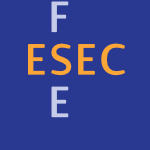84 papers:
 SIGMOD-2015-ElgamalYAMH #analysis #big data #component #distributed #named #scalability
SIGMOD-2015-ElgamalYAMH #analysis #big data #component #distributed #named #scalability- sPCA: Scalable Principal Component Analysis for Big Data on Distributed Platforms (TE, MY, AA, WM, MH), pp. 79–91.
 DUXU-IXD-2015-IslamI #comprehension #interface #ontology #semantics #set #web
DUXU-IXD-2015-IslamI #comprehension #interface #ontology #semantics #set #web- Understanding the Semantics of Web Interface Signs: A Set of Ontological Principals (MNI, AKMNI), pp. 46–53.
 ICML-2015-YangX15a #analysis #component #streaming
ICML-2015-YangX15a #analysis #component #streaming- Streaming Sparse Principal Component Analysis (WY, HX), pp. 494–503.
 MLDM-2015-KarkkainenS #analysis #component #robust
MLDM-2015-KarkkainenS #analysis #component #robust- Robust Principal Component Analysis of Data with Missing Values (TK, MS), pp. 140–154.
 POPL-2015-GarciaC #source code
POPL-2015-GarciaC #source code- Principal Type Schemes for Gradual Programs (RG, MC), pp. 303–315.
 STOC-2014-DworkTT0 #analysis #bound #component #privacy
STOC-2014-DworkTT0 #analysis #bound #component #privacy- Analyze gauss: optimal bounds for privacy-preserving principal component analysis (CD, KT, AT, LZ), pp. 11–20.
 CIKM-2014-ShangLCC #analysis #component #robust
CIKM-2014-ShangLCC #analysis #component #robust- Robust Principal Component Analysis with Missing Data (FS, YL, JC, HC), pp. 1149–1158.
 ICML-c2-2014-NieYH #analysis #component #robust
ICML-c2-2014-NieYH #analysis #component #robust- Optimal Mean Robust Principal Component Analysis (FN, JY, HH), pp. 1062–1070.
 ICML-c2-2014-ZhaoMXZZ #analysis #component #robust
ICML-c2-2014-ZhaoMXZZ #analysis #component #robust- Robust Principal Component Analysis with Complex Noise (QZ, DM, ZX, WZ, LZ), pp. 55–63.
 ICPR-2014-YiS #recognition #representation
ICPR-2014-YiS #recognition #representation- Principal Local Binary Patterns for Face Representation and Recognition (JY, FS), pp. 4554–4559.
 ICML-c1-2013-HanL13a #analysis #component
ICML-c1-2013-HanL13a #analysis #component- Principal Component Analysis on non-Gaussian Dependent Data (FH, HL), pp. 240–248.
 ICML-c3-2013-Kuleshov #algorithm #analysis #component #performance
ICML-c3-2013-Kuleshov #algorithm #analysis #component #performance- Fast algorithms for sparse principal component analysis based on Rayleigh quotient iteration (VK), pp. 1418–1425.
 KDD-2013-SunXY #analysis #component #robust
KDD-2013-SunXY #analysis #component #robust- Robust principal component analysis via capped norms (QS, SX, JY), pp. 311–319.
 CHI-2012-BaurBB #analysis #component #music #scalability
CHI-2012-BaurBB #analysis #component #music #scalability- Listening factors: a large-scale principal components analysis of long-term music listening histories (DB, JB, AB), pp. 1273–1276.
 ICML-2012-McCartin-LimMW #approximate
ICML-2012-McCartin-LimMW #approximate- Approximate Principal Direction Trees (MML, AM, RW), p. 209.
 ICPR-2012-Abdel-HakimE #analysis #component #named #online #performance #robust
ICPR-2012-Abdel-HakimE #analysis #component #named #online #performance #robust- FRPCA: Fast Robust Principal Component Analysis for online observations (AEAH, MES), pp. 413–416.
 ICPR-2012-WangSCPZ #analysis #component #feature model #named
ICPR-2012-WangSCPZ #analysis #component #feature model #named- STPCA: Sparse tensor Principal Component Analysis for feature extraction (SW, MS, YHC, EPP, CZ), pp. 2278–2281.
 ESOP-2011-HuntS #exponential #polynomial #security #type system
ESOP-2011-HuntS #exponential #polynomial #security #type system- From Exponential to Polynomial-Time Security Typing via Principal Types (SH, DS), pp. 297–316.
 ICEIS-v3-2011-QuG #analysis #identification #outsourcing #risk management
ICEIS-v3-2011-QuG #analysis #identification #outsourcing #risk management- The Analysis of IT Outsourcing Risk Identification on Principal-agent Theory (LQ, ZG), pp. 488–491.
 SOSP-2011-MaoCZWZK #api #fault #multi
SOSP-2011-MaoCZWZK #api #fault #multi- Software fault isolation with API integrity and multi-principal modules (YM, HC, DZ, XW, NZ, MFK), pp. 115–128.
 SAS-2010-AmatoPS #abstract domain #analysis #component
SAS-2010-AmatoPS #abstract domain #analysis #component- Deriving Numerical Abstract Domains via Principal Component Analysis (GA, MP, FS), pp. 134–150.
 CIKM-2010-MinZWM #component #keyword #topic
CIKM-2010-MinZWM #component #keyword #topic- Decomposing background topics from keywords by principal component pursuit (KM, ZZ, JW, YM), pp. 269–278.
 ICPR-2010-DurakN #classification #detection #image
ICPR-2010-DurakN #classification #detection #image- Principal Contour Extraction and Contour Classification to Detect Coronal Loops from the Solar Images (ND, ON), pp. 2403–2406.
 ICPR-2010-FengLYL #online #video
ICPR-2010-FengLYL #online #video- Online Principal Background Selection for Video Synopsis (SF, SL, ZYY, SZL), pp. 17–20.
 ICPR-2010-PaivaT #detection #image #using
ICPR-2010-PaivaT #detection #image #using- Detection of Salient Image Points Using Principal Subspace Manifold Structure (ARCP, TT), pp. 1389–1392.
 ICPR-2010-QiaoC #3d #analysis #component #modelling #statistics #using
ICPR-2010-QiaoC #3d #analysis #component #modelling #statistics #using- Statistical Texture Modeling for Medical Volume Using Generalized N-Dimensional Principal Component Analysis Method and 3D Volume Morphing (XQ, YWC), pp. 2488–2491.
 SAC-2010-TeixeiraM #data type #detection
SAC-2010-TeixeiraM #data type #detection- Data stream anomaly detection through principal subspace tracking (PHdST, RLM), pp. 1609–1616.
 ESOP-2009-MostrousYH #commutative #type system
ESOP-2009-MostrousYH #commutative #type system- Global Principal Typing in Partially Commutative Asynchronous Sessions (DM, NY, KH), pp. 316–332.
 ICML-2009-BaillyDR #analysis #component #grammar inference #problem
ICML-2009-BaillyDR #analysis #component #grammar inference #problem- Grammatical inference as a principal component analysis problem (RB, FD, LR), pp. 33–40.
 CASE-2008-Chirikjian
CASE-2008-Chirikjian- Parts entropy and the principal kinematic formula (GSC), pp. 864–869.
 ICML-2008-LuPV #analysis #component #multi
ICML-2008-LuPV #analysis #component #multi- Uncorrelated multilinear principal component analysis through successive variance maximization (HL, KNP, ANV), pp. 616–623.
 KDD-2008-BoutsidisMD #analysis #component #feature model
KDD-2008-BoutsidisMD #analysis #component #feature model- Unsupervised feature selection for principal components analysis (CB, MWM, PD), pp. 61–69.
 ESOP-2007-DreyerB #composition #source code
ESOP-2007-DreyerB #composition #source code- Principal Type Schemes for Modular Programs (DD, MB), pp. 441–457.
 ICML-2007-dAspremontBG #analysis #component
ICML-2007-dAspremontBG #analysis #component- Full regularization path for sparse principal component analysis (Ad, FRB, LEG), pp. 177–184.
 CASE-2006-ShaoHM #algorithm #analysis #component #linear #multi #using
CASE-2006-ShaoHM #algorithm #analysis #component #linear #multi #using- Quantitative Analysis Using NIR by Building Principal Component- Multiple Linear Regression-BP Algorithm (YS, YH, JM), pp. 161–164.
 ICML-2006-ConitzerG #algorithm #learning #online #problem
ICML-2006-ConitzerG #algorithm #learning #online #problem- Learning algorithms for online principal-agent problems (and selling goods online) (VC, NG), pp. 209–216.
 ICML-2006-DingZHZ #analysis #component #invariant #named #robust
ICML-2006-DingZHZ #analysis #component #invariant #named #robust- R1-PCA: rotational invariant L1-norm principal component analysis for robust subspace factorization (CHQD, DZ, XH, HZ), pp. 281–288.
 ICPR-v1-2006-ZhangDDM #multi #recognition
ICPR-v1-2006-ZhangDDM #multi #recognition- A Hierarchical Object Recognition System Based on Multi-scale Principal Curvature Regions (WZ, HD, TGD, ENM), pp. 778–782.
 ICPR-v2-2006-LuPV #analysis #component #multi #recognition
ICPR-v2-2006-LuPV #analysis #component #multi #recognition- Multilinear Principal Component Analysis of Tensor Objects for Recognition (HL, KNP, ANV), pp. 776–779.
 ICPR-v2-2006-SanguansatAJM #2d #analysis #component #recognition
ICPR-v2-2006-SanguansatAJM #2d #analysis #component #recognition- Class-Specific Subspace-Based Two-Dimensional Principal Component Analysis for Face Recognition (PS, WA, SJ, SM), pp. 1246–1249.
 ICPR-v2-2006-ZhengL #analysis #component #kernel #learning #locality #problem
ICPR-v2-2006-ZhengL #analysis #component #kernel #learning #locality #problem- Regularized Locality Preserving Learning of Pre-Image Problem in Kernel Principal Component Analysis (WSZ, JHL), pp. 456–459.
 ICPR-v3-2006-LiuW #algorithm #analysis #component #feature model #recognition #search-based
ICPR-v3-2006-LiuW #algorithm #analysis #component #feature model #recognition #search-based- Feature Extraction with Genetic Algorithms Based Nonlinear Principal Component Analysis for Face Recognition (NL, HW), pp. 461–464.
 ICPR-v3-2006-TangkuampienS #analysis #component #kernel
ICPR-v3-2006-TangkuampienS #analysis #component #kernel- Human Motion De-noising via Greedy Kernel Principal Component Analysis Filtering (TT, DS), pp. 457–460.
 ICPR-v3-2006-XuanCZYHSF #analysis #classification #component #novel
ICPR-v3-2006-XuanCZYHSF #analysis #classification #component #novel- A Novel Pattern Classification Scheme: Classwise Non-Principal Component Analysis (CNPCA) (GX, PC, XZ, QY, CH, YQS, DF), pp. 320–323.
 KDD-2006-YuYTKW #analysis #component #probability
KDD-2006-YuYTKW #analysis #component #probability- Supervised probabilistic principal component analysis (SY, KY, VT, HPK, MW), pp. 464–473.
 ICFP-2005-MakholmW #mixin #morphism #type inference
ICFP-2005-MakholmW #mixin #morphism #type inference- Type inference, principal typings, and let-polymorphism for first-class mixin modules (HM, JBW), pp. 156–167.
 ICML-2004-DingH04a #analysis #clustering #component
ICML-2004-DingH04a #analysis #clustering #component- K-means clustering via principal component analysis (CHQD, XH).
 ICML-2004-SuD #automation #component #probability
ICML-2004-SuD #automation #component #probability- Automated hierarchical mixtures of probabilistic principal component analyzers (TS, JGD).
 ICPR-v1-2004-ChenCL #algorithm #detection #robust
ICPR-v1-2004-ChenCL #algorithm #detection #robust- A Robust Algorithm of Principal Curve Detection (MC, ZC, YL), pp. 429–432.
 ICPR-v1-2004-VaswaniC #analysis #classification #component #null #probability
ICPR-v1-2004-VaswaniC #analysis #classification #component #null #probability- Classification Probability Analysis of Principal Component Null Space Analysis (NV, RC), pp. 240–243.
 ICPR-v2-2004-DeepuMR #analysis #component #online #recognition
ICPR-v2-2004-DeepuMR #analysis #component #online #recognition- Principal Component Analysis for Online Handwritten Character Recognition (VD, SM, AGR), pp. 327–330.
 ICPR-v2-2004-ImiyaY #analysis
ICPR-v2-2004-ImiyaY #analysis- Principal Curve Analysis for Temporal Data (AI, NY), pp. 475–478.
 ICPR-v3-2004-BakerB
ICPR-v3-2004-BakerB- Principal Flow for Tubular Objects with Non-Circular Cross-Sections (GB, NB), pp. 750–753.
 ICPR-v4-2004-MacDormanCA #component #generative #network #segmentation
ICPR-v4-2004-MacDormanCA #component #generative #network #segmentation- Periodic Nonlinear Principal Component Neural Networks for Humanoid Motion Segmentation, Generalization, and Generation (KFM, RC, MA), pp. 537–540.
 ICPR-v4-2004-ViguerasBS #multi #on the
ICPR-v4-2004-ViguerasBS #multi #on the- On the Influence of Fixing the Principal Point in Frame-by-Frame Multiplanar Calibration (JFV, MOB, GS), pp. 120–123.
 POPL-2004-AnconaZ #java
POPL-2004-AnconaZ #java- Principal typings for Java-like languages (DA, EZ), pp. 306–317.
 MLDM-2003-TanakaU #analysis #component #multi #principle #using
MLDM-2003-TanakaU #analysis #component #multi #principle #using- Discover Motifs in Multi-dimensional Time-Series Using the Principal Component Analysis and the MDL Principle (YT, KU), pp. 252–265.
 TLCA-2003-CoppolaR #logic #type system
TLCA-2003-CoppolaR #logic #type system- Principal Typing in Elementary Affine Logic (PC, SRDR), pp. 90–104.
 ASIA-PEPM-2002-LopezH
ASIA-PEPM-2002-LopezH- Principal type specialisation (PEML, JH), pp. 94–105.
 STOC-2002-Hallgren #algorithm #equation #polynomial #problem #quantum
STOC-2002-Hallgren #algorithm #equation #polynomial #problem #quantum- Polynomial-time quantum algorithms for Pell’s equation and the principal ideal problem (SH), pp. 653–658.
 ICALP-2002-Wells
ICALP-2002-Wells- The Essence of Principal Typings (JBW), pp. 913–925.
 CHI-2002-GrossmanBKFKB #3d
CHI-2002-GrossmanBKFKB #3d- Creating principal 3D curves with digital tape drawing (TG, RB, GK, GWF, AK, WB), pp. 121–128.
 ICPR-v2-2002-LuoWH #component #graph #independence
ICPR-v2-2002-LuoWH #component #graph #independence- The Independent and Principal Component of Graph Spectra (BL, RCW, ERH), pp. 164–167.
 ICPR-v2-2002-RuizLG
ICPR-v2-2002-RuizLG- A Note on Principal Point Estimability (AR, PELdT, GGM), pp. 304–307.
 ICPR-v2-2000-PerantonisPV #analysis #classification #component #paradigm #using
ICPR-v2-2000-PerantonisPV #analysis #classification #component #paradigm #using- Supervised Principal Component Analysis Using a Smooth Classifier Paradigm (SJP, SP, VV), pp. 2109–2112.
 ICPR-v3-2000-FukuiIIW #analysis #component #using
ICPR-v3-2000-FukuiIIW #analysis #component #using- Sign of Gaussian Curvature from Eigen Plane Using Principal Components Analysis (SF, YI, AI, RJW), pp. 3807–3810.
 ICPR-v3-2000-KeglK #linear #using
ICPR-v3-2000-KeglK #linear #using- Piecewise Linear Skeletonization Using Principal Curves (BK, AK), pp. 3135–3138.
 ICDAR-1999-DehkordiSW #approach #classification #component #word
ICDAR-1999-DehkordiSW #approach #classification #component #word- A Principal Component Approach to Classification of Handwritten Words (MED, NS, RJW), pp. 781–784.
 ICDAR-1999-SteinherzIR #analysis #component #detection
ICDAR-1999-SteinherzIR #analysis #component #detection- Skew Detection via Principal Components Analysis (TS, NI, ER), pp. 153–156.
 FM-v1-1999-SyversonS #formal method
FM-v1-1999-SyversonS #formal method- Group Principals and the Formalization of Anonymity (PFS, SGS), pp. 814–833.
 ICFP-1999-ZdancewicGM #programming language #proving
ICFP-1999-ZdancewicGM #programming language #proving- Principals in Programming Languages: A Syntactic Proof Technique (SZ, DG, JGM), pp. 197–207.
 POPL-1999-KfouryW #decidability #type inference
POPL-1999-KfouryW #decidability #type inference- Principality and Decidable Type Inference for Finite-Rank Intersection Types (AJK, JBW), pp. 161–174.
 TLCA-1999-BrodaD
TLCA-1999-BrodaD- Counting a Type’s Principal Inhabitants (SB, LD), pp. 69–82.
 ICDAR-1997-KawataniS #classification #component #design #difference #using
ICDAR-1997-KawataniS #classification #component #design #difference #using- Complementary Classifier Design Using Difference Principal Components (TK, HS), pp. 875–880.
 ICML-1997-Opitz #approach #component #effectiveness #network
ICML-1997-Opitz #approach #component #effectiveness #network- The Effective Size of a Neural Network: A Principal Component Approach (DWO), pp. 263–271.
 ESEC-FSE-1997-ForgacsB #slicing
ESEC-FSE-1997-ForgacsB #slicing- Feasible Test Path Selection by Principal Slicing (IF, AB), pp. 378–394.
 ICPR-1996-Hachimura #retrieval #using
ICPR-1996-Hachimura #retrieval #using- Retrieval of paintings using principal color information (KH), pp. 130–134.
 ICPR-1996-TanakaI96a #recognition #using
ICPR-1996-TanakaI96a #recognition #using- Curvature-based face surface recognition using spherical correlation-principal directions for curved object recognition (HTT, MI), pp. 638–642.
 POPL-1996-Jim #question #what
POPL-1996-Jim #question #what- What Are Principal Typings and What Are They Good For? (TJ), pp. 42–53.
 ML-1992-BalaMW #induction
ML-1992-BalaMW #induction- The Principal Axes Method for Constructive Induction (JWB, RSM, JW), pp. 20–29.
 POPL-1992-Tofte #higher-order
POPL-1992-Tofte #higher-order- Principal Signatures for Higher-Order Program Modules (MT), pp. 189–199.
 ICALP-1984-Ferment #matrix #product line
ICALP-1984-Ferment #matrix #product line- Principality Results About Some Matrix Languages Families (DF), pp. 151–161.
 POPL-1982-DamasM #functional #source code
POPL-1982-DamasM #functional #source code- Principal Type-Schemes for Functional Programs (LD, RM), pp. 207–212.
 STOC-1973-Greibach #context-free grammar #polynomial
STOC-1973-Greibach #context-free grammar #polynomial- Jump PDA’s, Deterministic Context-Free Languages Principal AFDLs and Polynomial Time Recognition-Extended Abstract (SAG), pp. 20–28.
 SIGMOD-2015-ElgamalYAMH #analysis #big data #component #distributed #named #scalability
SIGMOD-2015-ElgamalYAMH #analysis #big data #component #distributed #named #scalability DUXU-IXD-2015-IslamI #comprehension #interface #ontology #semantics #set #web
DUXU-IXD-2015-IslamI #comprehension #interface #ontology #semantics #set #web ICML-2015-YangX15a #analysis #component #streaming
ICML-2015-YangX15a #analysis #component #streaming MLDM-2015-KarkkainenS #analysis #component #robust
MLDM-2015-KarkkainenS #analysis #component #robust POPL-2015-GarciaC #source code
POPL-2015-GarciaC #source code STOC-2014-DworkTT0 #analysis #bound #component #privacy
STOC-2014-DworkTT0 #analysis #bound #component #privacy CIKM-2014-ShangLCC #analysis #component #robust
CIKM-2014-ShangLCC #analysis #component #robust ICML-c2-2014-NieYH #analysis #component #robust
ICML-c2-2014-NieYH #analysis #component #robust ICML-c2-2014-ZhaoMXZZ #analysis #component #robust
ICML-c2-2014-ZhaoMXZZ #analysis #component #robust ICPR-2014-YiS #recognition #representation
ICPR-2014-YiS #recognition #representation ICML-c1-2013-HanL13a #analysis #component
ICML-c1-2013-HanL13a #analysis #component ICML-c3-2013-Kuleshov #algorithm #analysis #component #performance
ICML-c3-2013-Kuleshov #algorithm #analysis #component #performance KDD-2013-SunXY #analysis #component #robust
KDD-2013-SunXY #analysis #component #robust CHI-2012-BaurBB #analysis #component #music #scalability
CHI-2012-BaurBB #analysis #component #music #scalability ICML-2012-McCartin-LimMW #approximate
ICML-2012-McCartin-LimMW #approximate ICPR-2012-Abdel-HakimE #analysis #component #named #online #performance #robust
ICPR-2012-Abdel-HakimE #analysis #component #named #online #performance #robust ICPR-2012-WangSCPZ #analysis #component #feature model #named
ICPR-2012-WangSCPZ #analysis #component #feature model #named ESOP-2011-HuntS #exponential #polynomial #security #type system
ESOP-2011-HuntS #exponential #polynomial #security #type system ICEIS-v3-2011-QuG #analysis #identification #outsourcing #risk management
ICEIS-v3-2011-QuG #analysis #identification #outsourcing #risk management SOSP-2011-MaoCZWZK #api #fault #multi
SOSP-2011-MaoCZWZK #api #fault #multi SAS-2010-AmatoPS #abstract domain #analysis #component
SAS-2010-AmatoPS #abstract domain #analysis #component CIKM-2010-MinZWM #component #keyword #topic
CIKM-2010-MinZWM #component #keyword #topic ICPR-2010-DurakN #classification #detection #image
ICPR-2010-DurakN #classification #detection #image ICPR-2010-FengLYL #online #video
ICPR-2010-FengLYL #online #video ICPR-2010-PaivaT #detection #image #using
ICPR-2010-PaivaT #detection #image #using ICPR-2010-QiaoC #3d #analysis #component #modelling #statistics #using
ICPR-2010-QiaoC #3d #analysis #component #modelling #statistics #using SAC-2010-TeixeiraM #data type #detection
SAC-2010-TeixeiraM #data type #detection ESOP-2009-MostrousYH #commutative #type system
ESOP-2009-MostrousYH #commutative #type system ICML-2009-BaillyDR #analysis #component #grammar inference #problem
ICML-2009-BaillyDR #analysis #component #grammar inference #problem CASE-2008-Chirikjian
CASE-2008-Chirikjian ICML-2008-LuPV #analysis #component #multi
ICML-2008-LuPV #analysis #component #multi KDD-2008-BoutsidisMD #analysis #component #feature model
KDD-2008-BoutsidisMD #analysis #component #feature model ESOP-2007-DreyerB #composition #source code
ESOP-2007-DreyerB #composition #source code ICML-2007-dAspremontBG #analysis #component
ICML-2007-dAspremontBG #analysis #component CASE-2006-ShaoHM #algorithm #analysis #component #linear #multi #using
CASE-2006-ShaoHM #algorithm #analysis #component #linear #multi #using ICML-2006-ConitzerG #algorithm #learning #online #problem
ICML-2006-ConitzerG #algorithm #learning #online #problem ICML-2006-DingZHZ #analysis #component #invariant #named #robust
ICML-2006-DingZHZ #analysis #component #invariant #named #robust ICPR-v1-2006-ZhangDDM #multi #recognition
ICPR-v1-2006-ZhangDDM #multi #recognition ICPR-v2-2006-LuPV #analysis #component #multi #recognition
ICPR-v2-2006-LuPV #analysis #component #multi #recognition ICPR-v2-2006-SanguansatAJM #2d #analysis #component #recognition
ICPR-v2-2006-SanguansatAJM #2d #analysis #component #recognition ICPR-v2-2006-ZhengL #analysis #component #kernel #learning #locality #problem
ICPR-v2-2006-ZhengL #analysis #component #kernel #learning #locality #problem ICPR-v3-2006-LiuW #algorithm #analysis #component #feature model #recognition #search-based
ICPR-v3-2006-LiuW #algorithm #analysis #component #feature model #recognition #search-based ICPR-v3-2006-TangkuampienS #analysis #component #kernel
ICPR-v3-2006-TangkuampienS #analysis #component #kernel ICPR-v3-2006-XuanCZYHSF #analysis #classification #component #novel
ICPR-v3-2006-XuanCZYHSF #analysis #classification #component #novel KDD-2006-YuYTKW #analysis #component #probability
KDD-2006-YuYTKW #analysis #component #probability ICFP-2005-MakholmW #mixin #morphism #type inference
ICFP-2005-MakholmW #mixin #morphism #type inference ICML-2004-DingH04a #analysis #clustering #component
ICML-2004-DingH04a #analysis #clustering #component ICML-2004-SuD #automation #component #probability
ICML-2004-SuD #automation #component #probability ICPR-v1-2004-ChenCL #algorithm #detection #robust
ICPR-v1-2004-ChenCL #algorithm #detection #robust ICPR-v1-2004-VaswaniC #analysis #classification #component #null #probability
ICPR-v1-2004-VaswaniC #analysis #classification #component #null #probability ICPR-v2-2004-DeepuMR #analysis #component #online #recognition
ICPR-v2-2004-DeepuMR #analysis #component #online #recognition ICPR-v2-2004-ImiyaY #analysis
ICPR-v2-2004-ImiyaY #analysis ICPR-v3-2004-BakerB
ICPR-v3-2004-BakerB ICPR-v4-2004-MacDormanCA #component #generative #network #segmentation
ICPR-v4-2004-MacDormanCA #component #generative #network #segmentation ICPR-v4-2004-ViguerasBS #multi #on the
ICPR-v4-2004-ViguerasBS #multi #on the POPL-2004-AnconaZ #java
POPL-2004-AnconaZ #java MLDM-2003-TanakaU #analysis #component #multi #principle #using
MLDM-2003-TanakaU #analysis #component #multi #principle #using TLCA-2003-CoppolaR #logic #type system
TLCA-2003-CoppolaR #logic #type system ASIA-PEPM-2002-LopezH
ASIA-PEPM-2002-LopezH STOC-2002-Hallgren #algorithm #equation #polynomial #problem #quantum
STOC-2002-Hallgren #algorithm #equation #polynomial #problem #quantum ICALP-2002-Wells
ICALP-2002-Wells CHI-2002-GrossmanBKFKB #3d
CHI-2002-GrossmanBKFKB #3d ICPR-v2-2002-LuoWH #component #graph #independence
ICPR-v2-2002-LuoWH #component #graph #independence ICPR-v2-2002-RuizLG
ICPR-v2-2002-RuizLG ICPR-v2-2000-PerantonisPV #analysis #classification #component #paradigm #using
ICPR-v2-2000-PerantonisPV #analysis #classification #component #paradigm #using ICPR-v3-2000-FukuiIIW #analysis #component #using
ICPR-v3-2000-FukuiIIW #analysis #component #using ICPR-v3-2000-KeglK #linear #using
ICPR-v3-2000-KeglK #linear #using ICDAR-1999-DehkordiSW #approach #classification #component #word
ICDAR-1999-DehkordiSW #approach #classification #component #word ICDAR-1999-SteinherzIR #analysis #component #detection
ICDAR-1999-SteinherzIR #analysis #component #detection FM-v1-1999-SyversonS #formal method
FM-v1-1999-SyversonS #formal method ICFP-1999-ZdancewicGM #programming language #proving
ICFP-1999-ZdancewicGM #programming language #proving POPL-1999-KfouryW #decidability #type inference
POPL-1999-KfouryW #decidability #type inference TLCA-1999-BrodaD
TLCA-1999-BrodaD ICDAR-1997-KawataniS #classification #component #design #difference #using
ICDAR-1997-KawataniS #classification #component #design #difference #using ICML-1997-Opitz #approach #component #effectiveness #network
ICML-1997-Opitz #approach #component #effectiveness #network ESEC-FSE-1997-ForgacsB #slicing
ESEC-FSE-1997-ForgacsB #slicing ICPR-1996-Hachimura #retrieval #using
ICPR-1996-Hachimura #retrieval #using ICPR-1996-TanakaI96a #recognition #using
ICPR-1996-TanakaI96a #recognition #using POPL-1996-Jim #question #what
POPL-1996-Jim #question #what ML-1992-BalaMW #induction
ML-1992-BalaMW #induction POPL-1992-Tofte #higher-order
POPL-1992-Tofte #higher-order ICALP-1984-Ferment #matrix #product line
ICALP-1984-Ferment #matrix #product line POPL-1982-DamasM #functional #source code
POPL-1982-DamasM #functional #source code STOC-1973-Greibach #context-free grammar #polynomial
STOC-1973-Greibach #context-free grammar #polynomial









